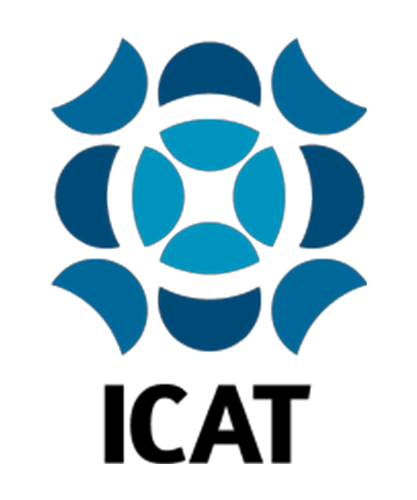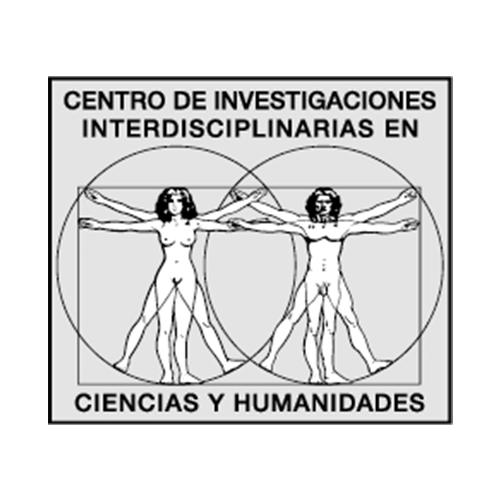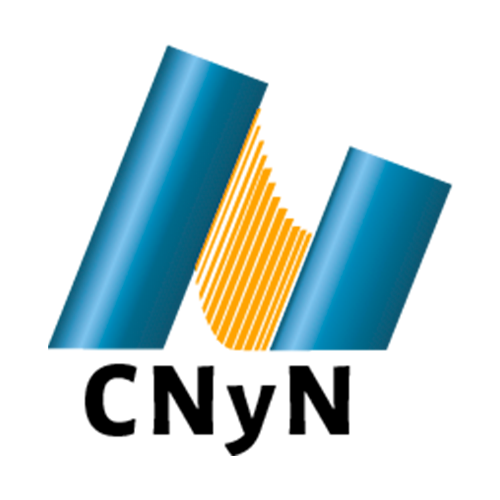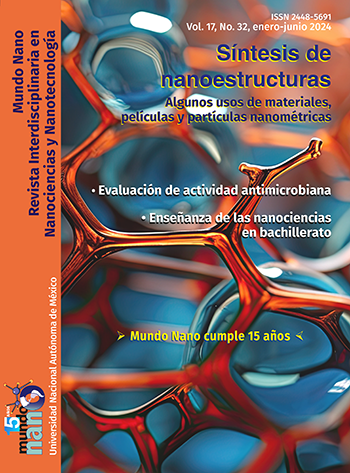Challenges and perspectives for teaching nanoscience and nanotechnology in high school
Main Article Content
Abstract
This exploratory study is about high school students’ difficulties in representing objects and processes on the nanoscale. Their knowledge about the relevance and implications of nanoscience and nanotechnology, their relationships with different areas of knowledge, and their interest in incorporating this field into the science school curriculum were analysed. A questionnaire was built incorporating previous research questions and new ones and was applied online during the COVID-19 pandemic, and to other sample post-pandemic with students returned to school. Results show that the nanoscale objects and processes are the most difficult for them. Students conceive that physical laws are applicable in all scale spectrums showing a misunderstanding of the fundamentals of physics. The relevance of nanoscience and nanotechnology for science and technology and their implications for the modern way of life are clear to students. However, their interest that this topic should be incorporated into the curriculum is not enthusiastic. Some suggestions about teaching awareness to be considered to teach nanoscience are proposed in the analysis of results.
Downloads
Article Details

Mundo Nano. Revista Interdisciplinaria en Nanociencias y Nanotecnología por Universidad Nacional Autónoma de México se distribuye bajo una Licencia Creative Commons Atribución-NoComercial 4.0 Internacional.
Basada en una obra en http://www.mundonano.unam.mx.
References
Adadan E, Akaygun S, Sanyal A. Size-dependent properties of matter: is the size of a pill important?. Science Activities. 2017;54(3-4):86-95. DOI: https://doi.org/10.1080/00368121.2017.1395790
Blonder R, Mamlok-Naaman R. Learning about teaching the extracurricular topic of nanotechnology as a vehicle for achieving a sustainable change in science education. International Journal of Science and Mathematics Education. 2016;14:345-72. DOI: https://doi.org/10.1007/s10763-014-9579-0
De Guzma E, Sanjay N. Refining student’s explanations of an unfamiliar physical phenomenon-microscopic friction. Research on Science Education. 2019;49:1177-211. DOI: https://doi.org/10.1007/s11165-017-9650-2
Delgado GC, Judith Sarí Peña JS. Análisis de percepción sobre la nanociencia y la nanotecnología: el caso de la comunidad universitaria de la UNAM. Mundo Nano. Revista Interdisciplinarias en Nanociencas y Nanotecnología. 2011;4(1):85-97.
Duncan RG, Rogat AD, Yarder A. A learning progression for deepening students’ understandings of modern genetics across the 5th-10th grades. Journal of Research in Science Teaching. 2009;46(6):655-74. DOI: https://doi.org/10.1002/tea.20312
Flores-Camacho F, García-Rivera BE, Gallegos-Cázares L, Calderón Canales E. Representaciones y aprendizaje de las ciencias. México: Universidad Nacional Autónoma de México; 2020.
Greenberg A. Integrating nanoscience into de classroom: perspectives on nanoscience education projects. ACS Nano. 2009;3(4):762-9. DOI: https://doi.org/10.1021/nn900335r
IRRESISTIBLE Project. 2022;.
Jackman J, Cho DJ, Lee J, Ming J, Blesenbacher F, Bonnell DA, Hersam MC, Weiss PS, Cho NJ. Nanotechnology education for the global world: training the leaders of tomorrow. ACS Nano. 2016;10:5595-9. DOI: https://doi.org/10.1021/acsnano.6b03872
Lan YL. Development of an attitude scale to asses K-12 teachers’ attitudes toward nanotechnology. International Journal of Science Education. 2012;34(8):1189-210. DOI: https://doi.org/10.1080/09500693.2011.651657
Magana AJ, Brophy SP, Bryan LA. An integrated knowledge framework to characterize and scaffold size and scale cognition (FS2C). International Journal of Science Education. 2012;34(14):1281-203. DOI: https://doi.org/10.1080/09500693.2012.715316
Mata JM, Peña JS. Análisis de la percepción de la nanociencia y nanotecnología: el caso de la comunidad universitaria de UAM, UDLAP e IPN. Mundo Nano. Revista de Nanociencias y Nanotecnología. 2012;5(9):81-96.
Meinguer J. La comunicación de la nanotecnología del carbono como una herramienta para impulsar el pensamiento crítico en la educación química preuniversitaria. Mundo Nano. Revista Inmterdisciplinaria en Nanociencias y Nanotecnología. 2019;12(22):3-35. DOI: https://doi.org/10.22201/ceiich.24485691e.2019.22.61953
Mills Shaw K, Van Horne K, Zhang. H, Boughman J. Essay contest reveals misconceptions of high school students in genetics content. Genetics. 2008;178(3):1157-. DOI: https://doi.org/10.1534/genetics.107.084194
Pozo JI, Flores F. Cambio conceptual y representacional en el aprendizaje y la enseñanza de la ciencia. Madrid: Antonio Machado Libros; 2007.
Prain V, Tytler R. Learning through constructing representations in science: a framework of representational construction affordances. International Journal of Science Education. 2012;34(17):2751-73. DOI: https://doi.org/10.1080/09500693.2011.626462
Rodríguez DD, Ávila AG. Experiencias en micro y nano escalas para niños y jóvenes. Mundo Nano. Revista Inmterdisciplinaria en Nanociencias y Nanotecnología. 2011;4(2):121-8.
Rost M, Knuuttila T. Models as epistemic artifacts for scientific reasoning in science education research. Education Sciences. 2022;12(276):1-20. DOI: https://doi.org/10.3390/educsci12040276
Sánchez-Mora M, Tagüeña J. El manejo de las escalas como obstáculo epistemológico en la divulgación de la nanociencia. Mundo Nano. Revista Inmterdisciplinaria en Nanociencias y Nanotecnología. 2011;4(2):83-102. DOI: https://doi.org/10.22201/ceiich.24485691e.2011.2.45011
Sakhnini S, Blonder R. Nanotechnology applications as a context for teaching the essential concepts of NST. International Journal of Science Education. 2016;38(3):521-38. DOI: https://doi.org/10.1080/09500693.2016.1152518
Sakhnini S, Blonder R. Insertion points of the essential nanoscale science and technology (NST) concepts in the Israeli middle school science and technology curriculum. Nanotechnology Review. 2018;7(5):373-91. DOI: https://doi.org/10.1515/ntrev-2018-0026
Shank P, Wise A, Stanford T, Rosenquist A. Can high school students learn nanoscience? An evaluation of the viability and impact of the nanoscience curriculum. SRI International; 2009.
Sgouros G, Stavrou D. Teachers’ professional development in nanoscience and nanotechnology in the context of a community learners. International Journal of Science Education. 2019;41(15):2070-93. DOI: https://doi.org/10.1080/09500693.2019.1659521





